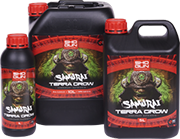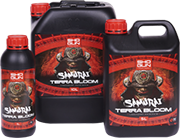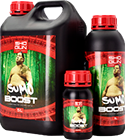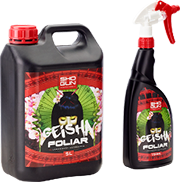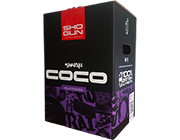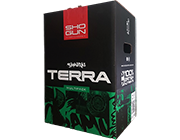How to Light Your Grow Room
How to Light Your Grow Room
We all know how important light is, from seed to bloom, for plant growth. But are you putting this knowledge into practice, and making the most of the light in your grow room?
Light density is a crucial factor in reaping a good harvest and is an issue many indoor growers sadly either ignore or don’t get right. The science can seem impenetrable, sometimes contradictory, but you needn’t feel ashamed if you can’t immediately get your head around it. It’s an area that many bright sparks have devoted their whole lives to. It’s the purpose of this article – to hopefully shine a light on a, particularly tricky subject. In this article, we’ll try to explain the science and how you can maximize plant growth with a few simple tweaks and purchases.
Coverage
Firstly, you need the right lamps, and the right number of lamps for your grow space. You may have read 32 to 50 watts of light per square foot of grow room should do the trick (the higher number covering the flowering phase and the lower covering the vegetative phase). So for a four foot by four foot room (16 square feet) you need 512 to 800 watts.
When buying a lamp, you’ll often see mention of watts and lumens – the amount of visible light from a light source – but here’s the rub, neither, on their own, are particularly useful metrics. Watts refer to electrical input, rather than light output, while lumens only cover the spectrum visible to the human eye. What’s more important – but as we’ll see not the be all and end all – is Photosynthetically Active Radiation (PAR) and micromoles per joule to establish the amount of generated light you need.
Photosynthetically Active Radiation (PAR) and Photosynthetic Photon Flux (PPF)
PAR is the spectral range of light that photosynthetic organisms can use for photosynthesis – the process by which your plants feed themselves. The amount of PAR being produced is measured using Photosynthetic Photon Flux (PPF), expressed as micromoles per second (μmol/s), and the optimum rate for growth is between about 700 to 800 μmol/s.
It’s the optimum because although you’ll see increased growth if you ramp up the rate to 1500 μmol/s, it simply isn’t worth the extra light energy; the extra growth isn’t sufficient to warrant the potential problems associated with high temperatures, nor the extra zeroes on your electricity bill.
Unfortunately, PAR should not, on its own, be used as a measurement; it’s, well, complicated. PAR just tells us the type of light required for photosynthesis. It doesn’t tell us exactly which type of light a lamp emits. You also need to know the level of Photosynthetically Useful Radiation (PUR) your lamp produces. For example, a lamp with stonking levels of green light would register a high PAR but be useless for photosynthesis, whereas a lamp with more blue or red light might show a lower PAR but actually be far more productive.
Photosynthetic Photon Flux Density (PPFD)
To further add to the confusion, you also need to be aware of Photosynthetic Photon Flux Density (PPFD). PPFD is the measurement that lets you know how much PAR arrives at your plant, measured in micromoles per square meter per second (μmol/m2/s).
Top tip: choose a product that tells you the light intensity of your lamps at multiple heights – there’s no point in just taking a reading at the centre of your grow space because light intensity diminishes as it moves away from the centre. Finally you need to take into account Photon Efficiency, achieved by calculating how much PPF your light can generate against how much electricity in watts the lamp uses up.
You can be forgiven for starting to feel a bit confused here. The key take home is that when you’re in the market for a lamp, check the product information, and chat with your sales advisor. A good lamp should provide everything you need to know, including a light distribution diagram on the box. If the manufacturer doesn’t provide this kind of information, it might be time to put that product back on the shelf and move on.
Inverse Square Law
So, you’ve got the right lamp, now you need to take into account the position of your lighting setup and consider inverse square law. Light intensity from any source is inversely proportional to the square of the distance from said source. Two feet away from a plant you’ll get a quarter of the light intensity of a plant placed one foot away – so make sure your lights are placed sufficiently close to your crop. Set up your lights too far away and you’ll simply waste energy, too close and prepare for plant damage from the heat.
Reflectors
Besides the lamp you should also consider a reflector. Reflective sheeting is also important to cover your interior space, which will a) prevent light escaping and b) prevent natural light entering your grow room. The type of reflector you choose depends on the type of bulbs you’re using and the size of your growing area. Spend a bit extra on your hood for better light distribution and fewer heat spots. And if you’re using a lamp that emits more heat, like an MH, you might want to opt for an air-cooling reflector. Get too large a reflector and your plants will suffer heat stress, but too small a reflector can lead to uneven growth.
The Screen of Green (SCROG) technique
The type of crop is significant too – small crops such as lettuce need reflectors, and lights, placed quite close, while taller plants need regular adjustments of reflectors and light heights. One way to encourage uniform growth is to use The Screen of Green (SCROG) technique which involves using an artificial canopy made from a form of wire between the lamp and your plants. As the plants grow, they’ll emerge through the screen - they can then be weaved into the matrix, raising lower branches and lowering upper branches, to create an evenly distributed level plane that allows for greater light penetration.
This is a lot to take in, we’ll grant you that.
It’s an area that attracts a lot of scientific interest and there are many people out there, far more intelligent and dedicated to the field than us, who have, as we’ve said, devoted their whole lives to the topic. Ultimately, you want to buy good kit, adequately labelled, and you’ll need to discuss with your resident grow shop expert how best to arrange your setup. Do your maths, set up your reflectors correctly, and remember your plants’ light needs change in the flowering and vegetative phases. Good luck!






